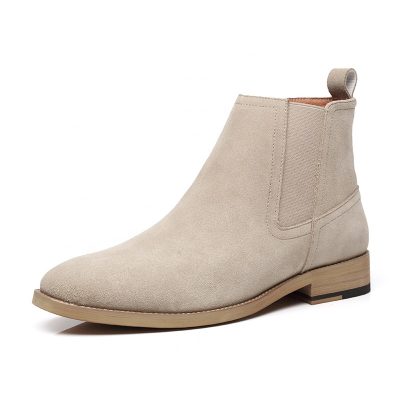During the entire service life of the footwear, the sole must undergo continuous flexing without cracking or breaking.
Due to the strain caused by the deflection of the foot, the sole may be worn, cracked or broken. As the sharp edge cuts the gap and punctures, cracks or fractures will also appear, and they will gradually become cracks during continuous deflection. Extreme temperatures (especially below freezing) and pollution (such as engine oil) can also accelerate shoe sole cracking. Therefore, it is very important to test the flex crack resistance of the shoe sole. There are many test methods that can be selected, so it may be difficult to select the correct method. This article describes the three main flexural testing methods and applications for rubber and plastic soles, and the equipment SATRA provides for these tests.
Using the Bennewart method
Test safety shoes Ross deflection test For smooth sole designs with little or no sole pattern, you can use the Ross deflection test machine (SATRA TM60). Generally, three test pieces with a size of 150 mm × 25 mm are removed from the shoe, and the longer edge is parallel to the heel seat. Use a chisel with a knife edge of 2 mm to make an incision on the sample, and then place the sample into the flexing machine so that the incision is directly on the flexing mandrel. By measuring the incision before and after the test, the degree of increase in the incision can be calculated. The test is generally run for 150,000 cycles at a temperature of -5°C. This can help to form a measurable increase in the incision within a reasonable time frame. The only exception is to test thermoplastic rubber at +20°C, because this material performs better at lower temperatures. The SATRA Ross Flex Tester (STM 141) can hold 12 test pieces at the same time. The machine flexes the sample at a standard speed of 60 flexures per minute. However, a machine with 100 deflection per minute can be used to perform this ASTM version of the test. In addition to standard machines, lower and higher temperature equipment can also be provided. This temperature range is from the peripheral temperature to -20°C and from the peripheral temperature to +40°C.
SATRA Ross Flex Tester (STM 141) Bata tape test If the sole contains a large splint or a complex design that integrates different materials, then SATRA’s better method for testing flex crack resistance is the Bata tape tester. This is a generally accepted test that can repeatedly produce results related to actual wear. Glue the front part of the intact sole (minus the heel but still contain any cavity filler or midsole material) to the canvas belt. This part is driven by driven spindles of different diameters, so when the belt is driven onto the spindle, the sole is cyclically and repeatedly flexed. The diameter of the driven mandrel is generally 90 mm, but it can be changed to 60 mm or 120 mm to increase or decrease the degree of deflection. Unlike the Ross deflection test, there is no need to cut the sole. The test is run for 50,000 cycles, and continuous visual evaluation is performed during the run. Record the length and depth of any cracks. The test is generally performed at room temperature, but in SATRA, the sole can be tested at temperatures as low as -15°C. The Bata belt flexometer (STM 459) is equipped with three replaceable driven spindles with dimensions of 60 mm, 90 mm and 120 mm as a standard configuration. The rotation speed is 90 deflection per minute on a smaller spindle. A lower temperature version of the machine can also be provided to perform tests at temperatures as low as -20°C.
Bennewart test Like the old standard, the new safety footwear standard (EN ISO 20344:2004) requires the use of a Bennewart machine to test the sole. More testers prefer to use the Bata belt test method, so that the entire front of the sole can be tested. The insole is an important part of the sample. Use a chisel similar to Ross to make an incision on the nominal deflection curve. The sole clamps both ends, and the roller pushes the insole to flex the sole 90 degrees. The degree of increase of the incision was measured after 30,000 cycles of operation at room temperature. If necessary, this test can be performed at SATRA below zero. This is a demanding test and is more suitable for durable footwear with strong soles. For casual, fashionable, and everyday-wear footwear, this test is considered too strict, especially when the soles are thick. SATRA’s Rennewart full sole deflection tester (STM 465) is designed to ensure the force balance, so it requires less force to perform the test to make the running result more stable. The instrument clamps are rigid and operate strictly in accordance with standards. A modified version of the Bennewart tester, which uses a spring-action clamp, does not perform this test according to the standard. However, a low-temperature version of this instrument can be provided to perform tests at temperatures as low as -20°C. A cutting jig (STM 465) equipped with a chisel can be provided to help accurately cut the sole.



















